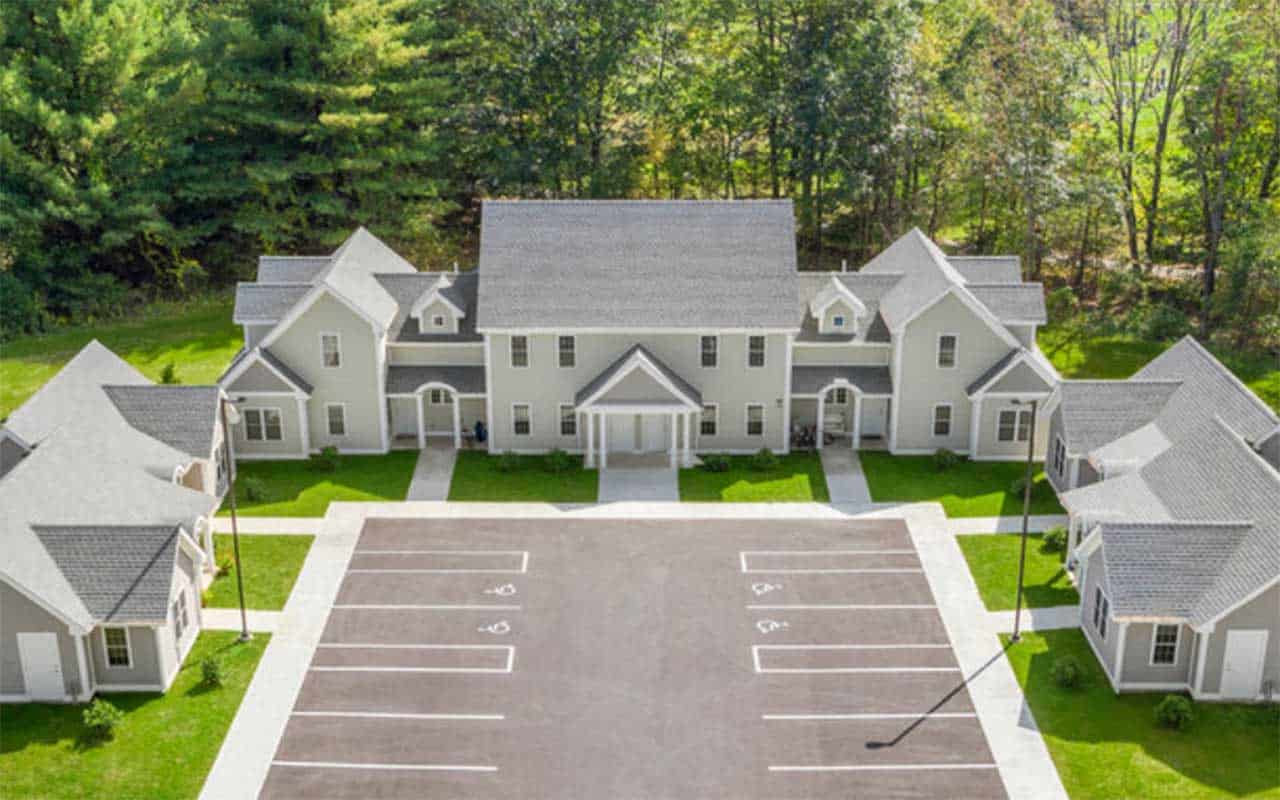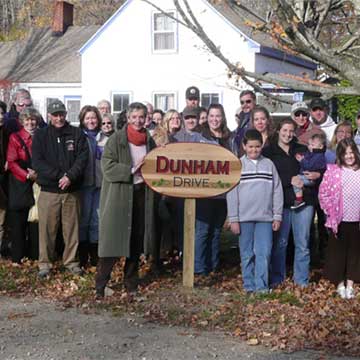This Month’s Featured Article

Urgent Progress
 “Home is a place not only of strong affections,” Harriet Beeche Stowe once said. “But of entire unreserved.” The famous sentiment has since encompassed the entirety of the nation’s romantic ambitions for home ownership. It is not only a place we value as a “dressing room” for the outside world, home has also come to represent our individual legacies, generational birthmarks, and youthful ambition – a physical representation of how we see ourselves.
“Home is a place not only of strong affections,” Harriet Beeche Stowe once said. “But of entire unreserved.” The famous sentiment has since encompassed the entirety of the nation’s romantic ambitions for home ownership. It is not only a place we value as a “dressing room” for the outside world, home has also come to represent our individual legacies, generational birthmarks, and youthful ambition – a physical representation of how we see ourselves.
In rural America, home ownership has become an especially important way of life. Since the turn of the 21st century, that way of life has gone from permanent to unsteady thanks to economic crises, market collapses, and most recently, a global pandemic. The unprecedented surge with which the coronavirus swept through the streets of New York City provoked similarly jaw-dropping waves of migrations northward along the banks of the Hudson River and east toward Litchfield County’s foothills – and beyond.
In a desperate attempt to put some distance between themselves and the city’s growing infection rates, Manhattanites suddenly found themselves imbued with both the area’s natural beauty, as well as its convenient proximity to careers now allowing for “remote” work schedules. While it always feels somewhat satisfying for the historic beauty of our area to be appreciated, the newfound haven for city-dwellers did little for locals in search of a home of their own – particularly for first-time buyers. “The process of buying a home for the first time is stressful enough,” said one resident and small business owner in the Village of Millerton, NY. “This past year made what was already tense, downright scary for me and my family.”
Accounts like these have unfortunately become more dense as inventory and sales prices have remained historically volatile since the spring of last year. According to the New York State Association of Realtors’ May 2021 report, New York state’s average home sales prices have increased from $384,259 to $481,456 since May of 2020. A May report from the Albany Times Union stated, “If no additional single-family homes were listed for sale in the Hudson Valley Catskill Region Multiple Listing Service, the available home inventory – just 275 units – would sell out in just about five weeks in Ulster County.” For locals, particularly those aged 25-40, the unexpected bidding wars between cash buyers and those with generational wealth has caused tensions to rise as the housing market continues to boil at a confounding rate.
The complex issue has yet to deter non-profit organizations and local leaders who have spent the past year working toward solutions for locals feeling the financial pinch. Leaders in the Village of Millerton, the Town of Salisbury, CT, and even in the cities of Hudson and Poughkeepsie in New York are keenly aware of the possibility of an exodus of longtime residents, a possibility that will undoubtedly change both the fabric and the economy of rural life. In order to combat this, those at the forefront have taken on initiatives that may lessen the burden while remaining cost-effective. That may mean tearing the scab off the perceptions of a few long-standing terms and redefining how home ownership is achieved.
History of affordable housing
Historically, the term affordable housing has conjured up images in the American lexicon of poverty-laden, poorly built shanties, something to be shamed not celebrated. The truth however, is that affordable housing is a broad mosaic of a subject that is intertwined with the spirit of the American dream and relates to many disciplines including finance, economics, politics, and social services. In the early 1930s, construction and finance programs were designed to alleviate some of the housing hardships caused by the Great Depression. The most recognizably derogatory portrait that has been mistakenly tied to affordable housing programs is that of Hoovervilles. A “Hooverville” was a shanty town built during the Great Depression by the homeless in the United States. They were named after Herbert Hoover, who was President of the United States during the onset of the Depression and was widely blamed for the economic collapse.
An act of Congress in 1934 created the Federal Housing Administration, which made home ownership affordable for a broader segment of the public with the establishment of mortgage insurance programs. These programs made possible the low down payments and long-term mortgages that are commonplace today but were almost unheard of at that time. In 1965, Congress elevated housing to a cabinet-level agency of the federal government, creating the US Department of Housing and Urban Development (HUD), but soon the cost of operating public housing eclipsed the revenue brought in from resident rents. In turn, Congress passed the “Brooke Amendment” in 1969 codifying a limitation on the percentage of income a public housing resident could be expected to pay for rent. The original figure was 25% of income, which was later raised to the 30% standard that exists today.
The Housing and Community Development Act of 1974 brought a different kind of connotation to the term affordable housing as it focused on block grants and an increase in the authority granted to local jurisdictions. This act was the origin of the tenant- and project-based Section 8 rental assistance programs, and it created the Community Development Block Grant (CDBG) from seven existing housing and infrastructure programs.
In the prevailing four decades, there has been little in the way of significant investment in affordable housing for those who exist in the lower income brackets. Since the onset of the pandemic, the difficulty for locals in the pursuit of home ownership has been relatively indiscriminate in terms of economic class. Residents in both working and middle classes, who have spent years building careers and families in Columbia, Dutchess, Litchfield, and Berkshire counties have entered the fray for those in need of more affordable options. Housing advocates and local leaders have worked for years toward the establishment and funding permanent homes as well as affordable rentals. The recent rush on home purchases has only exacerbated the issue and expedited its urgency.
The rural effect: Pine Plains and Millerton in New York
Pine Plains Town Supervisor Darrah Cloud pulls no punches when discussing barriers of entry for folks in the middle and lower classes when it comes to home ownership in our area, she says emphatically, “Down payments and availability.”
For those in the “millennial” generation who have reached the age in which purchasing a home traditionally should be viable, down payments have become especially hard when competing with student loan debt and the new influx of cash buyers. “I think (affordable housing) is very feasible but we need to secure available land as well,” says Cloud. “An organization called Rural Build has a design they are willing to share with municipalities so they can build affordable, passive-energy homes on rural lots for people to buy. Zoning changes can help with these projects. Housing needs to be in walkable areas, built for what we call Workforce Housing, for people who are working but can’t afford the high prices in the area.” Another aspect that has somewhat silently crept its way into the local housing crisis is its effect on local wage-earning jobs. While wages remain stagnant, home prices continue to rise and in the Hudson Valley those looking to be employed in the local businesses that survived the pandemic are finding it more difficult to live in commuting distance.
In North East, a town encompassing the Village of Millerton in Dutchess County, local officials are experiencing the balancing act of housing and the economy firsthand. “Access to safe, lower cost housing definitely affects the local economy,” says Edith Greenwood the vice-chairperson of the Town’s Zoning Board of Appeals. “People want to come and work in the numerous service businesses in Millerton, but they can’t find a place to live that they can afford.”
As part of the Northeastern Dutchess Initiative of Hudson River Housing, the Tri-Town Coalition is a collaborative group of Amenia, Millerton, and Pine Plains residents and stakeholders actively working to advance solutions to shared concerns for affordable housing and inclusive economic development in the region. Their studies have helped advance the notion of sustainable, workforce housing in the region though there remains much work to be done. “The main issue is where do you put new housing and will the neighbors object? What does it take to incentivize a developer to take on such a project in Millerton or nearby? Multi-family or modular probably makes the most sense currently, but you have to deal with septic systems and in most places wells,” reiterates Ms. Greenwood. “There is a delicate balance between the scale needed to make a project viable to a developer and what the community will tolerate.”
Christopher Kennan, the Town’s supervisor remains optimistic, “There is some affordable housing in our area, but not enough and often of poor quality. It’s a huge challenge for our small local governments like the Town of North East to create more affordable housing,” he says. “But with smart, creative zoning we can make sure we’re at least not discouraging affordable housing from being built.”
City governments weigh in
According to the Albany Times Union last year, Columbia County saw a 204% increase in relocations from New York City with Hudson and its Ulster County counterpart Kingston leading the way as the two local cities experienced the biggest influx of relocations in the entire nation. The City of Hudson, which has long been faced with difficult redevelopment and aspects of gentrification, may be on the precipice of the first local breakthrough for affordable housing.
Mayor of the City of Hudson Kamal Johnson, who has made housing and displacement a priority since he was elected in 2019, is spearheading a new plan that will hopefully bring relief for local residents. In April, the city announced a partnership with Hudson Valley Pattern for Progress, a not-for-profit policy, planning, advocacy, and research organization to create an Affordable Housing Development Plan (AHDP). According to a report, Pattern for Progress will study developable properties, funding opportunities, and site feasibility in order to create a plan for the operations, timeline, and partnerships necessary to develop affordable housing in Hudson.
“Too many of our residents are struggling with housing in Hudson,” Mayor Johnson relayed to the public. “Creating an affordable housing development plan is an important step to meet Hudson’s housing needs.”
Recently appointed housing justice director for the City, Michelle Tullo sees the opportunity for equity as well. “Hudson is unique because it is a very small city facing the same problems as many larger cities,” she says. “This position interested me because it was an opportunity to work on housing justice in a holistic way with a diverse coalition of residents, activists, and government officials. This coalition won an Anti-Displacement Grant from Enterprise Community Partners, which funds my position. With this grant we are working on both short-term fixes to housing justice, like providing emergency rental assistance through the Hudson Roots Program, as well as long-term solutions like creating a Housing Trust Fund and a Housing Justice Organizing Fellowship.”
Further down river
Similarly, on the lower rim of Dutchess County, the City of Poughkeepsie has seen the effects the pandemic has had on the stability of local housing options. For attorney Shane Egan, who is running for the Fourth Ward seat on the Poughkeepsie Common Council and as a lifelong resident of Poughkeepsie previously served as a commissioner on the city’s Historic Preservation Commission, the issue is complex in more urban areas. “I certainly think affordable housing needs to be a part of Poughkeepsie’s comprehensive plan along with other types of development,” he says. “But the devil is in the details. Poorly conceived affordable housing statues can often have the opposite outcome. Forcing developers to include one or two units of affordable housing into a development project causes the developer to increase the price of the remaining units. Working towards broader access solutions rather than just an affordable unit here or there is the right approach.”
Mr. Egan looks forward to a more collaborative effort in this regard saying, “The City has seen development on portions of the waterfront, but more focus needs to be paid to the Main Street corridor and other areas that have been neglected for too long. Working with all the stakeholders, developers, residents, and community groups, to ensure at least some of the developments in the pipeline include affordable housing is key for the City’s long-term success.”
Salisbury in action
Perhaps the most well established affordable housing initiative in the Tri-Corner region, The Salisbury Housing Trust was established as a result of a forum in the year 2000 that found affordable housing to be a very serious need in the area. The Housing Trust is a 501c(3) non-profit sustained by donations. In the past two decades, residents of the small Litchfield County town in Connecticut have contributed more than $900,000; all of which has gone to support home ownership. The town has also assisted with grants totaling $30,000.
Through sustained community efforts, The Salisbury Housing Trust has built or renovated 14 homes at six locations in Salisbury over the last 18 years. Of those homes, seven are new; seven are renovations. The homes are owned and occupied by residents and have sold for between $120,000 and $200,000. As part of its commitment, The Salisbury Housing Trust retains ownership of the land and enters into a contract with the owner limiting resale amounts, so these homes will remain affordable as “lease restricted.” Members of the trust say they have on occasion renovated older homes more than once, as needed, when they were resold.
Chair Leo Gafney, who has been a member of the Salisbury Housing Trust for the better part of two decades, feels as though it is what is unseen that is the biggest obstacle in the way of providing more housing options to more folks. “There is a kind of lethargy and ‘no hurry’ approach because the need is not obvious,” he says. “People are not sleeping in their cars. But young people and families are choosing to live elsewhere and we need them here.”
An even older staple of Salisbury’s affordable housing initiative is the Salisbury Housing Committee, which has been committed to building and managing affordable rental housing in Salisbury since the 1970s. Today, they own and manage Faith House and Sarum Village located on Cobble Road and contains 33 units, which include a mix of one, two, and three bedroom homes. Monthly rents range between approximately $500 and $1,300 based on number of bedrooms and household income, and tenants pay no more than 30% of their income on rent and utilities.
Co-president Peter Halle feels the urgency for affordable rentals now more than ever despite his presence on the committee for nearly 30 years. “The need for affordable rentals has always been present here in Salisbury,” he says. “Now, there’s no supply at all.” Despite the void of reasonably affordable living spaces growing each week, Peter and his fellow committee members still feel pushback from those who retain the now century’s old perception. “Momentum matters right now, for the work our committee wants to do and for the folks who work here and keep our community and economy vibrant,” he says. “People fear the unknown, and that can foster negative views. But like Sarum Village, which has been home for residents for so long now, fair, equitable, and reasonably priced housing can become part of the fabric of our community.”
Historic Research made possible by the National Low Income Housing Coalition, visit nlihc.org for more information.
For more information on Hudson River Housing, visit hudsonriverhousing.org.
Check Hudson’s Affordable Housing Development Plan at cityofhudson.org
For more information on Hudson Valley’s Pattern for Progress, visit pattern-for-progress.org.
For more information on both the Salisbury Housing Trust and the Salisbury Housing Committee, or to find out how you can help, visit salisburycthousing.org.



